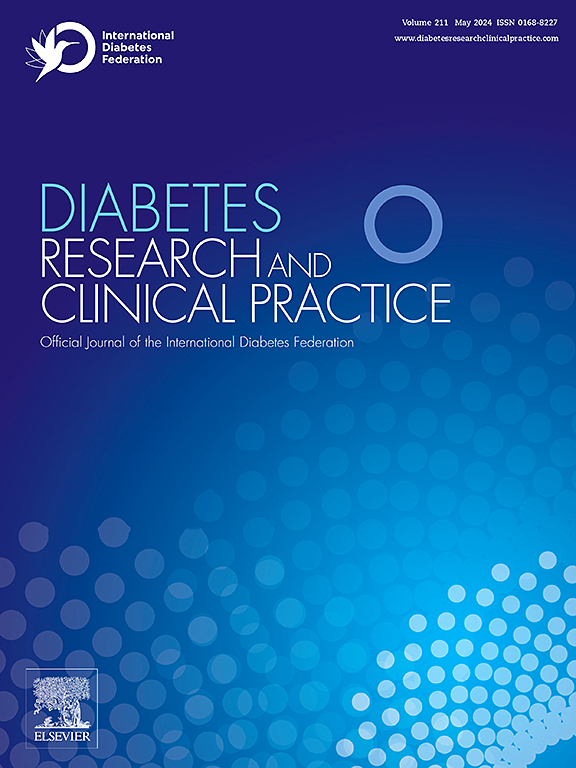Real-world implementation of a clinic-community Food is Medicine intervention for patients with type 2 diabetes
IF 7.4
3区 医学
Q1 ENDOCRINOLOGY & METABOLISM
引用次数: 0
Abstract
Aims
To evaluate the impact of a real-world implementation of a Food is Medicine intervention on improvements in health outcomes for patients in a rural area.
Methods
Patients with type 2 diabetes and food insecurity were referred by their primary care provider to receive weekly vouchers redeemable at a local food bank. Outcomes, including Hemoglobin A1c (HbA1c), Body Mass Index (BMI), and blood pressure (BP), were measured at baseline and follow-up. Voucher redemption and attendance at health education sessions were recorded throughout the intervention (November 2023-April 2024). Linear mixed effects models were used to determine the association between voucher redemption and health outcomes.
Results
Patients (n = 165) identified as Latinx (86 %) and female (73 %), with a median of 17 weekly food voucher redemptions (IQR: 15–22). After controlling for the number of pickups and days between baseline and follow-up clinic visits, significant improvements in HbA1c were observed (−0.34 [-0.59, −0.09]; p = 0.008), with 38 % of patients demonstrating a clinically relevant decrease in HbA1c levels of 0.5 %. There were no significant improvements in BMI or BP.
Conclusions
Participation in this clinic-community Food is Medicine intervention was associated with improvements in HbA1c in Latinx patients and increased engagement in behavioral lifestyle choices for disease management.
临床-社区食品作为2型糖尿病患者药物干预的现实世界实施。
目的:评估现实世界实施食品即药物干预对改善农村地区患者健康结果的影响。方法:由初级保健提供者推荐的2型糖尿病和食品不安全患者每周获得可在当地食品银行兑换的代金券。结果包括在基线和随访时测量血红蛋白A1c (HbA1c)、体重指数(BMI)和血压(BP)。在整个干预期间(2023年11月至2024年4月),记录了代金券兑换和参加健康教育会议的情况。使用线性混合效应模型来确定代金券兑换与健康结果之间的关系。结果:患者(n = 165)确定为拉丁裔(86 %)和女性(73 %),中位数为每周17次食品券兑换(IQR: 15-22)。在控制服药次数和基线与随访门诊之间的天数后,观察到HbA1c显著改善(-0.34 [-0.59,-0.09];p = 0.008),38 %的患者表现出临床相关的HbA1c水平下降0.5 %。BMI和血压没有明显改善。结论:参与这种临床-社区食品即药物干预与拉丁裔患者HbA1c的改善和疾病管理中行为生活方式选择的增加有关。
本文章由计算机程序翻译,如有差异,请以英文原文为准。
求助全文
约1分钟内获得全文
求助全文
来源期刊

Diabetes research and clinical practice
医学-内分泌学与代谢
CiteScore
10.30
自引率
3.90%
发文量
862
审稿时长
32 days
期刊介绍:
Diabetes Research and Clinical Practice is an international journal for health-care providers and clinically oriented researchers that publishes high-quality original research articles and expert reviews in diabetes and related areas. The role of the journal is to provide a venue for dissemination of knowledge and discussion of topics related to diabetes clinical research and patient care. Topics of focus include translational science, genetics, immunology, nutrition, psychosocial research, epidemiology, prevention, socio-economic research, complications, new treatments, technologies and therapy.
 求助内容:
求助内容: 应助结果提醒方式:
应助结果提醒方式:


